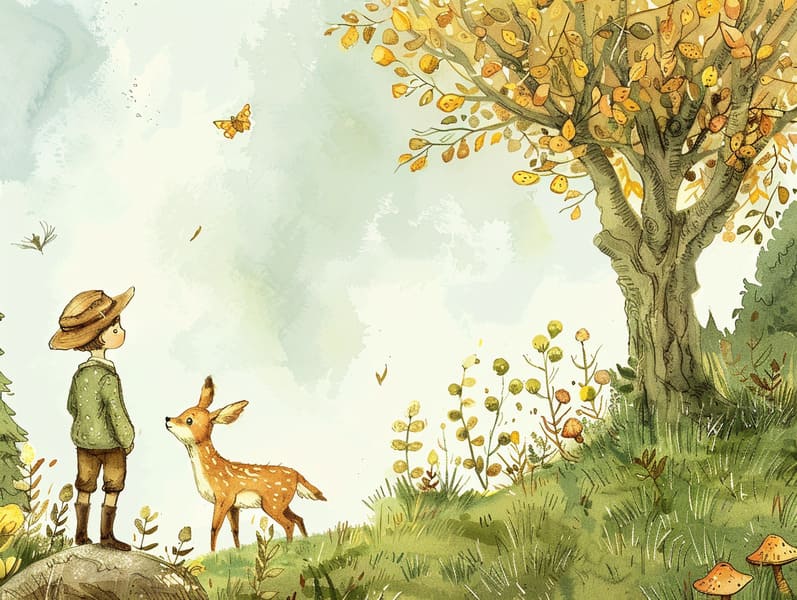
Vintage fairy tales have legendary status. These narratives have been told from one generation to the next far before they were ever transcribed. They emerged from a variety of societies, including Middle Eastern traditions. They were initially transmitted among older generations, often carrying themes and messages aligned with the societal norms and beliefs of the time.
The famous Grimm duo, Jacob and Wilhelm, were among the first to gather and publish many of these beloved tales. Their volume, "Grimm's Fairy Stories," included tales like "Ashenputtel," "The Bread Crumb Trail," and "Snow-White and Rose-Red," which have since become pillars in the world of famous fairy tales. Similarly, H. C. Andersen's whimsical tales, such as "The Sea Maid," and "The Little Duckling," have floated into hearts worldwide, cementing their place in the pantheon of beloved fairy tales.
Though they are old, these tales remain as important as ever, especially as bedtime stories for kids. These charming stories are now available in diverse formats, including beautifully illustrated books, captivating animations, and free fairy tales online.
Their unwavering allure can be linked to several enchanting factors:
Key Lessons: Old fairy tales often provide important moral lessons. Fairy tales like "The Shepherd Boy and the Wolf" teach the significance of honesty, while "The Tale of the Tortoise and the Hare" emphasize the merits of persistence and humility. These tales offer young readers clear distinctions between moral and immoral, shaping their moral compass in a subtle yet lasting way.
Empathy and Understanding: Old fairy tales frequently involve protagonists facing tests and troubles, encouraging readers to identify with their struggles and rally behind their triumphs. For instance, "Beauty's Beast" teaches us the merit of looking deeper to appreciate the real character of a being, enhancing perception and insight.
Cultural Perception: Many fairy tales are saturated in the cultural contexts from which they emerged. Delving into these narratives can provide fascinating glimpses into different historical contexts, fostering a sense of global insight and respect.
Imagination and Creativity: The fantastical elements in timeless fairy tales—fairy godmothers—trigger children’s creativity. These narratives carry readers to enchanted realms, boosting creative dreams and a sense of enchantment that persists a lifetime.
Classic fairy tales are not only spellbinding but also edifying. They function as alluring tools in enhancing various thinking and feeling skills in children. When fairy tales are spoken, they strengthen language proficiency by presenting new terms and intricate sentence structures. This practice also enhances auditory perception and focus, as the young remain attentive, anxious to see what happens next.
Furthermore, talking about the themes and characters of traditional fairy tales can cultivate thought processes and thought processes. Young ones are led here to pinpoint patterns, predict happenings, and figure out cause and effect. These explorations also ease children say their thoughts and feelings, fostering their emotional intelligence.
In today’s high-tech era, the proliferation of digital fairy tales has made these fairy tales more attainable than ever. Websites and web apps share extensive collections of famous fairy tales that can be looked at or listened to anytime, anywhere. Fairy tales narrated are particularly popular, featuring an entertaining method for kids to appreciate these whimsical stories. Voice books and narrated videos lead characters and settings to life, often supplemented by magical audio effects and tunes that enrich the storytelling experience.
The persistent attraction of classic fairy tales lies in their ability to evolve to the present while staying true to their key morals. Contemporary versions of these tales often integrate more representative characters and modern settings, making them relatable to today’s audience. However, the fundamental themes of fearlessness, charity, and fairness remain unchanged, continuing to impact readers of all ages.
Traditional fairy tales also offer a sense of warmth and knownness. They offer a organized narrative with a unmistakable beginning, middle, and end, often finishing with the solving of conflicts and the triumph of justice over injustice. This dependability can be calming for kids, yielding a sense of unwaveringness in an fluctuating world.
Traditional fairy tales continue to enthrall and teach new generations, maintaining their loveliness and applicability in modern society. As children's bedtime stories, they confer upon a perfect blend of wonder and wisdom, facilitating moral values, empathy, and creativity. The prevalence of digital fairy tales and the likability of fairy tales told out loud affirm that these ancient fairy tales remain reachable to new generations.
By keeping and communicating these stories, we continue to laud the rich tapestry of cultural legacy and cultural heritage. Whether you are discovering a gorgeously illustrated book, experiencing a digital library, or listening on an read-aloud book, the enchantment of old fairy tales is always within reach. These stories convey of the perpetual impact of storytelling and its ability to link us across generations and cultures.
Whether you are viewing a vividly illustrated book, experiencing a virtual collection, or listening through an narrated book, the radiance of bedtime fairy tales is always within reach.
These tales convey of the timeless essence of stories and its ability to bind us across generations and cultures, forging a link that delights and instructs alike.